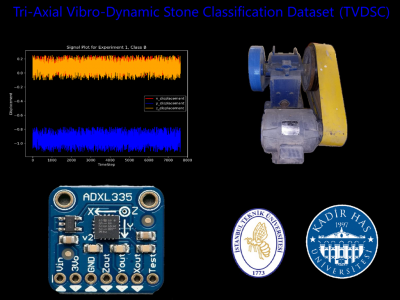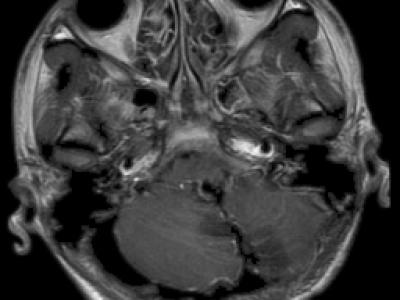Artificial Intelligence

The dataset has undergone format conversion based on URPC2021_Sonar_images_data, enabling it to be trained by YOLO and RT-DETR models.
The folder 'images' contains image files
The folder 'labels' contains TXT format annotation files.
The annotation file in the folder annotations is in XML format
Data.yaml is the configuration file for YOLO training
Data_deTR is the configuration file for RT-DETR and US-DETR training
- Categories:
 160 Views
160 Views
# Top 100 YouTube Channels Dataset
## Overview
This dataset provides comprehensive information about the top 100 YouTube channels based on subscriber count. It offers valuable insights into the most popular content creators on the platform, their performance metrics, and channel details.
## Dataset Contents
The dataset includes the following information for each channel:
- Channel ID
- Title
- Custom URL
- Subscriber Count
- Video Count
- View Count
- Category
- Country
- Categories:
 131 Views
131 Views
This study presents a English-Luganda parallel corpus comprising over 2,000 sentence pairs, focused on financial decision-making and products. The dataset draws from diverse sources, including social media platforms (TikTok comments and Twitter posts from authoritative accounts like Bank of Uganda and Capital Markets Uganda), as well as fintech blogs (Chipper Cash and Xeno). The corpus covers a range of financial topics, including bonds, loans, and unit trust funds, providing a comprehensive resource for financial language processing in both English and Luganda.
- Categories:
 377 Views
377 Views
This dataset, mentioned in paper "MS2A: Memory Storage-to-Adaptation for Cross-domain Few-annotation Object Detection" and prepared for Cross-domain Few-annotation Object Detection task, consists of two cross-domain scenarios: Indus-S to Indus-T1 and Indus-S to Indus-T2. In detail, Indus-S consists of 4614 images for training and 1153 images for validation; Indus-T1 and Indus-T2 have 269 and 432 images for validation respectively. For the training data of Indus-T1 and Indus-T2, we introduce three different settings: 10-anno, 30-anno and 50-anno.
- Categories:
 108 Views
108 Views
In order to realize intelligent and accurate campus risk detection, this paper proposes an improved YOLOv10 algorithm that integrates Self-Calibrated Illumination algorithm. The algo-rithm optimizes the loss function by introducing an auxiliary bounding box, and accelerates model convergence. StarNet is employed to enhance the original network structure, feature extraction capability, and decrease parameter count and calculations.
- Categories:
 73 Views
73 Views
Two-year price movements from 01/01/2014 to 01/01/2016 of 88 stocks are selected to target, coming from all the 8 stocks in the Conglomerates sector and the top 10 stocks in capital size in each of the other 8 sectors. The full list of 88 stocks and their companies selected from 9 sectors is available in StockTable, a facsimile of the paper appendix appendix_table_of_target_stocks.pdf.
- Categories:
 227 Views
227 Views
Recent advances in generative visual content have led to a quantum leap in the quality of artificially generated Deepfake content. Especially, diffusion models are causing growing concerns among communities due to their ever-increasing realism. However, quantifying the realism of generated content is still challenging. Existing evaluation metrics, such as Inception Score and Fréchet inception distance, fall short on benchmarking diffusion models due to the versatility of the generated images.
- Categories:
 174 Views
174 Views
This data ia small sample set from the purchase order data catalog of state of california publicaly available at https://catalog.data.gov/dataset/purchase-order-data. From this source, we take a sample of 50,000 entries. The data provides comprehensive details about various purchase orders issued during this period. The dataset comprises 32 columns, capturing information about each purchase order. This dataset is rich in information and provides a valuable resource for item UNSPSC categorization.
- Categories:
 151 Views
151 Views本文介绍了一种无人监督的医疗 旨在解决高斯-泊松挑战的图像去噪模型 CT、MRI 和 X 射线图像中的混合噪声。传统深度图像先验 (DIP) 使用随机噪声作为网络输入的方法收敛缓慢, 而直接使用观察到的噪点图像通常会导致过度拟合和较差 去噪性能。为了克服这些限制,我们将 frequency 和 用于对观察到的噪声进行多通道处理的空间域信息 图像。然后,特征融合模块集成了两个域的优势, 能够更准确地提取结构信息,显著 提高降噪性能,并加速收敛。此外,我们 引入基于熵的提前停止机制,用于动态监控 训练期间熵的变化,自动停止迭代一次 熵减少并稳定,从而防止过拟合。此外 该模型采用 L1 损失函数,而不是使用的传统 MSE 损失 以更好地保留图像边缘和细节。实验结果表明 所提出的模型具有优势,PSNR 平均增加 10.7%,并且 与 DIP 相比,SSIM 为 17.9%。值得注意的是,到第 60 次迭代时,PSNR 和 所提出的方法的 SSIM 值已经超过了峰值 在第 1,360 次迭代中通过 DIP 实现,在第 2,600 次迭代中由 DIP 变体实现 迭 代。所提出的模型提供了一种高效、稳健和创新的方法 医学影像降噪任务的解决方案。
- Categories:
 227 Views
227 Views
